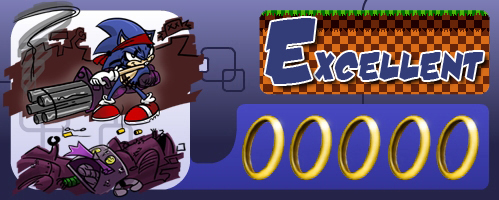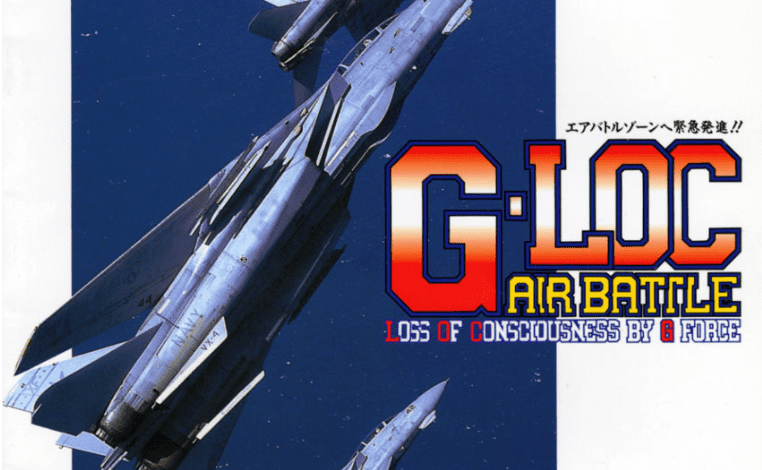
Review: SEGA AGES G-LOC Air Battle (Switch)
You don't snuggle with Air Battle... You strap yourself in and feel the G's!
Alright, everyone, strap in: It’s time to talk about G-LOC. And in case it wasn’t obvious from the imagery above (or the “Air Battle” part), this is about “Loss Of Consciousness by G-Force,” not a semi-automatic pistol.
When it comes to SEGA and fighter jets, one name tends to come to mind: After Burner. So then, what is G-LOC Air Battle? Well, depending on where you look, it’s either a spin-off or a spiritual sequel to the aforementioned classic, though never really advertised with any actual affiliation, despite sharing concepts and reportedly even sound effects.
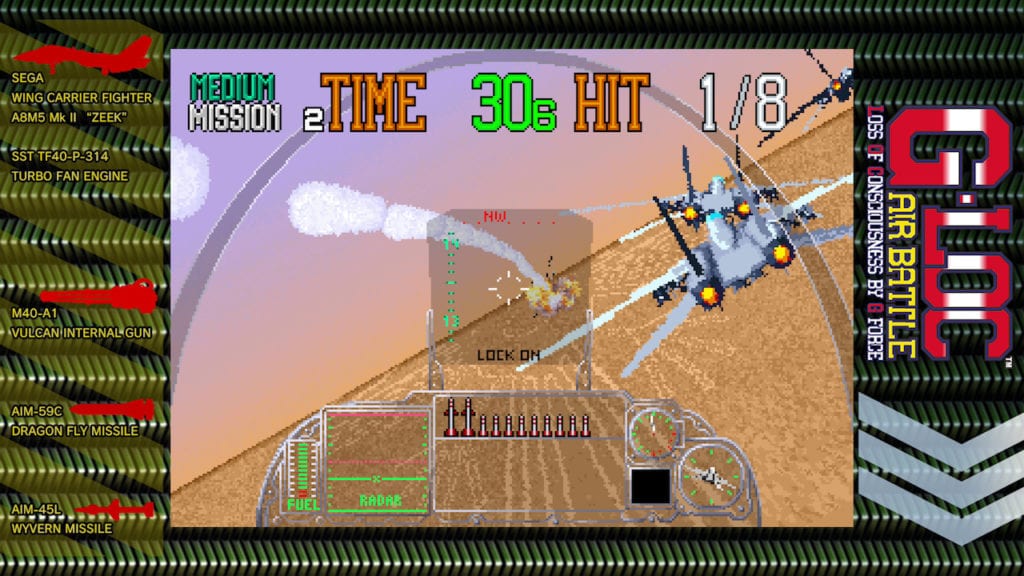
Another Plane of Existence
The gameplay concept is largely the same: After a slightly-amusing and very brief tutorial showing how to control the game with controls from the arcade machine, you take to the cockpit of the experimental SEGA Wing Carrier Fighter A8M5 Mk II, codenamed “ZEEK,” and choose from one of three routes of varying length and difficulty. Each leg of the route will task you with a mission to take out a certain number of enemies over varying terrain (ground enemies in a canyon, jets in the sky, boats on the water, etc.) before either the time runs out or you’re shot down. Your final challenge is to land your plane on the deck of an aircraft carrier in a sequence that feels slightly reminiscent of Konami’s Top Gun for the Nintendo Entertainment System (NES), but is far less finicky in execution.
Locking on to enemies is a key component of the action, allowing you to target and shoot them with your more powerful missiles. Should you run out, your M40-A1 Vulcan Internal Gun can do the job, but it tends to take a bit more work than you might have time for. Different from After Burner is that the action primarily takes place from a view within the cockpit, though it pulls back to a third-person view when you’ve been locked on to by an enemy and/or missile, requiring you to try to evade.
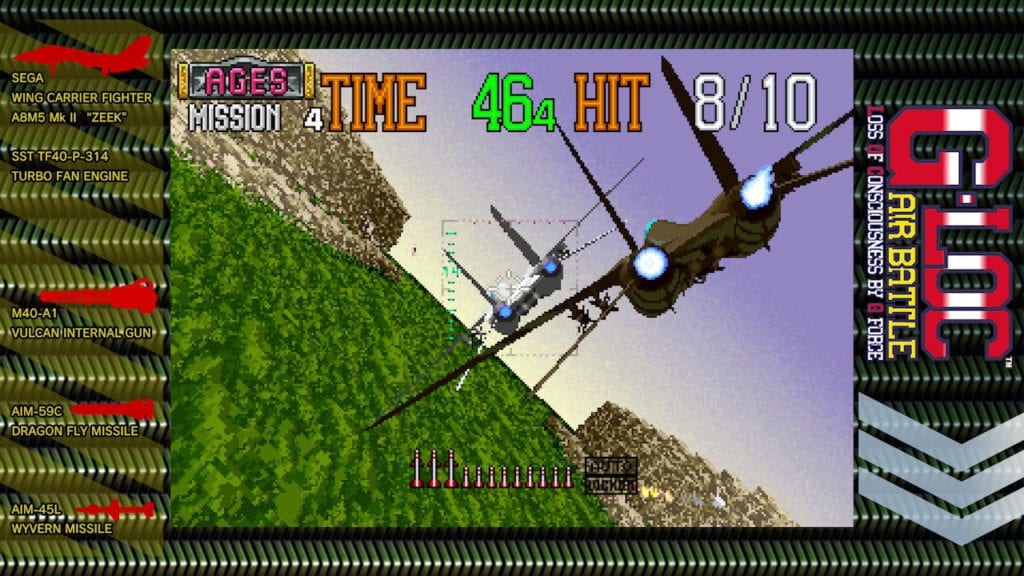
“Shut up, Joe.”
G-LOC a la Modes
M2 has spiced things up for the SEGA AGES release of the game with a variety of different options designed to help bring as much of the original arcade experience home as possible. They also further augment it with various settings to either make this quarter-muncher a little more manageable for those who are less interested in rising to the top of the leaderboards, or alternatively, a bit more challenging for those who want to show the world who the real top gun is.
Your core mode is the Arcade Mode, which provides two options at the startup. You can either play with Quick Lock-on, which will add your score to the Arcade Mode rankings when turned off, or the Freestyle rankings when turned on. Then there’s the AGES Mode, which in this case gives you a one-credit run with no continues and no difficulty settings, and with more enemies, more missiles, and a more powerful lock-on system.
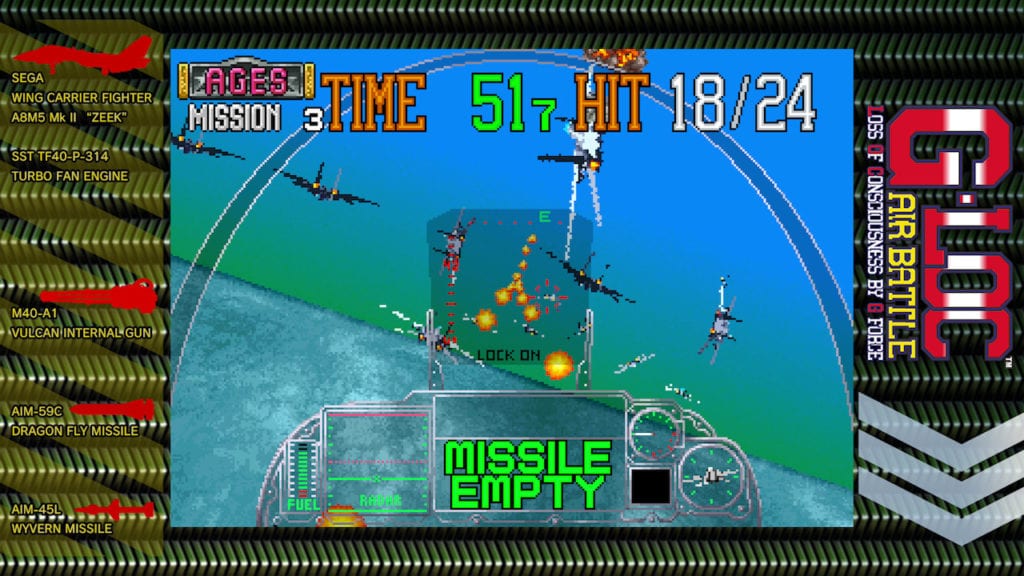
Oodles of Options
Moving to the Options menu, you can choose whether you would like to play the original Japanese version of the game, or the International release (I’m not aware of any particular differences between the two beyond maybe some Japanese text instead of English. Do you know of any? Tell us in the comments!). Beyond the difficulty-oriented routes mentioned above, there are five different difficulty levels you can choose from here. These only apply to the Arcade Mode, however, since (as mentioned above) AGES Mode has only the one setting.
As always, you can set the controls to whatever best suits you. This includes whether or not to have inverted Y-axis controls; naturally, you’ll want these on if you want the authentic flight experience, especially if you’re using some sort of flight stick (assuming they make those for the Nintendo Switch). You can also choose whether to have the Vulcan on autofire or not, which differs from turbofire in that the plane is always shooting, even during between-mission tallies when you don’t have control of the plane. Another option is auto-centering, which is curiously set to on as a default, even though it says that off is how it was in the arcade. And of course, you can turn HD rumble on or off.
Display modes are where things get particularly interesting, as far as recreating the arcade experience goes. Unlike SEGA AGES Space Harrier, this release seems to try to capture a little more of the arcade atmosphere, particularly with regards to the movement of the cabinet. “Moving Seat” does just what it says on the tin, having the border around the machine act similarly to the R360 arcade machine’s 360 degree three-axis movement. The game can already be a bit disorienting at times on its own, and this just makes it more so.
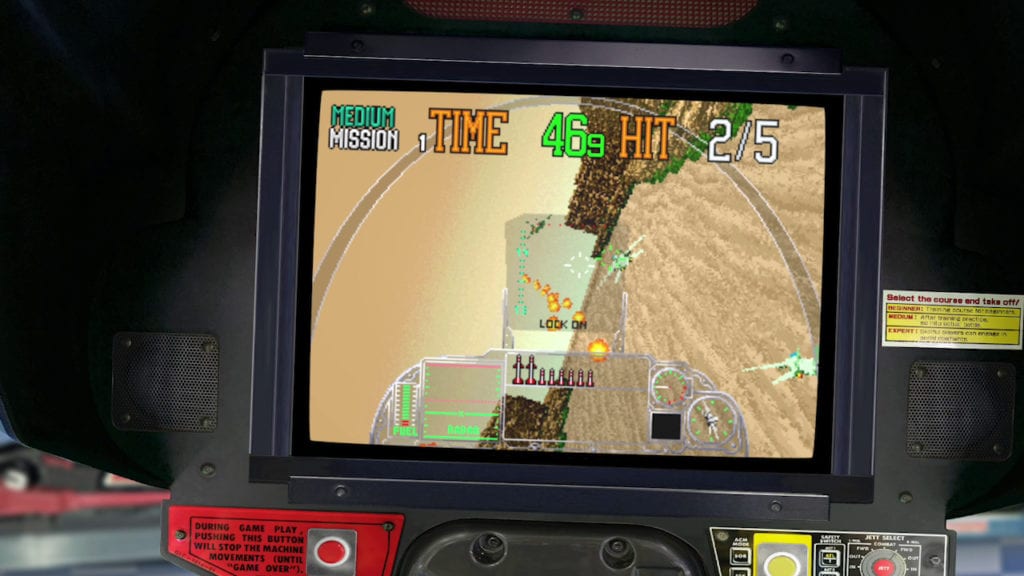
If you want the atmosphere, but not the movement, the Cockpit display might be more your speed. Or you can go for “Dot by dot” (pixel perfect), “Fit screen” (which fills the screen vertically), “Full” (stretches it horizontally as well as vertically), and “Vintage.” In the cases of Vintage, Cockpit, and Moving Seat, you’ll also have certain display options locked in; the first two have both scan lines and smoothing enabled, while the latter only has Smoothing.
Then there are the other non-arcade borders. You have your usual assortment of generic wallpapers, but the custom Type A shows the logo and some military stripes on the right, while the specs of your fighter and it’s various missile types, plus the M40-A1 Vulcan Internal Gun on the left.
The Music menu was a little more robust this time than I’ve come to expect. In addition to a music player, you have sliders of a sort which allow you to fine-tune how loud the game machine and arcade ambient sounds are, so you can find a mix that works for you. To be honest, though, with the ambience maxed out and the arcade machine turned all the way down, I still mostly heard the game itself. In addition, I don’t think they did the work they did on the 3D Classics games here with the sounds of the arcade buttons clicking and the like; if they did, it wasn’t distinct enough for me to notice on my playthrough.
Oh, and one other thing came up as I was playing. I’m not sure what precisely triggered the unlock, but after my first Game Over, I was “granted access” to “Sortie Count,” which lets me set how many credits (lives) one coin will give me. Despite being a quarter-muncher, you still have a limited number of continues, so if the difficulty settings aren’t enough to balance things in your favor, this may just do the trick.
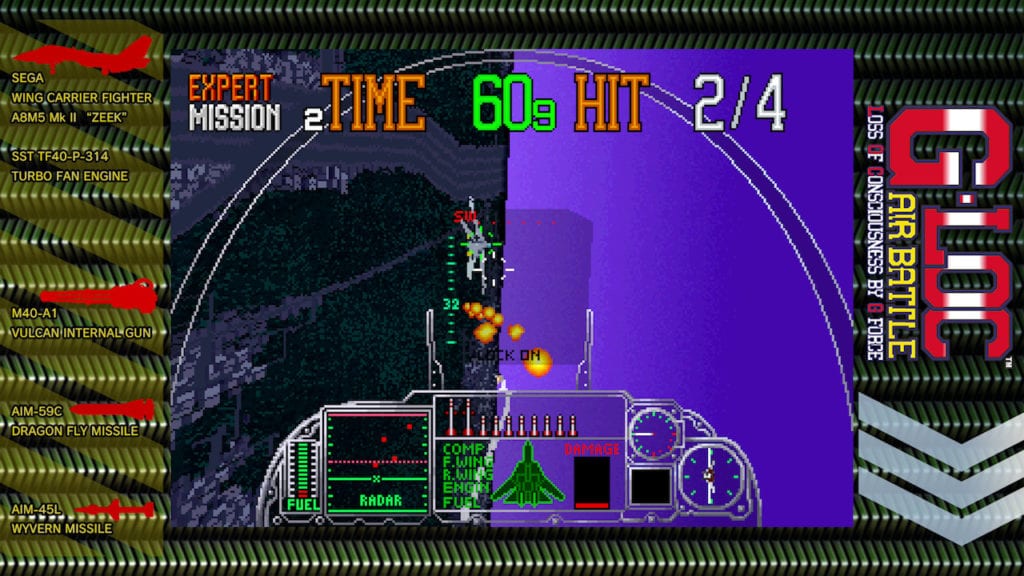
Highway to the SEGA Zone
G-LOC Air Battle doesn’t have a whole lot of depth to the gameplay or level design, but then, it wasn’t really meant to. It was designed first and foremost about 30 years ago as a quarter-munching arcade experience meant to simulate (to an approachable degree, at least) the experience of flying a fighter jet and getting into dogfights, and that’s precisely what it delivered. With SEGA AGES G-LOC Air Battle, M2 has come just about as close as we can hope to preserving that experience in our homes — at least until virtual reality becomes more of a thing, that is.


